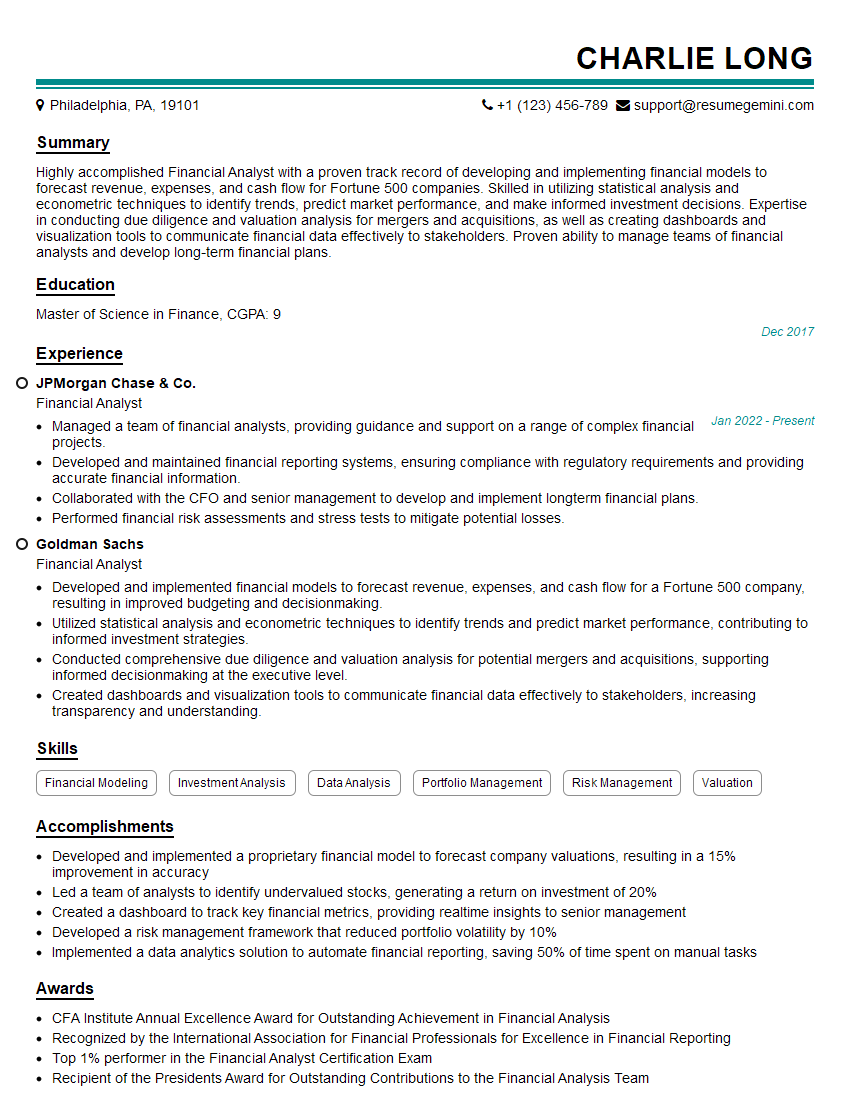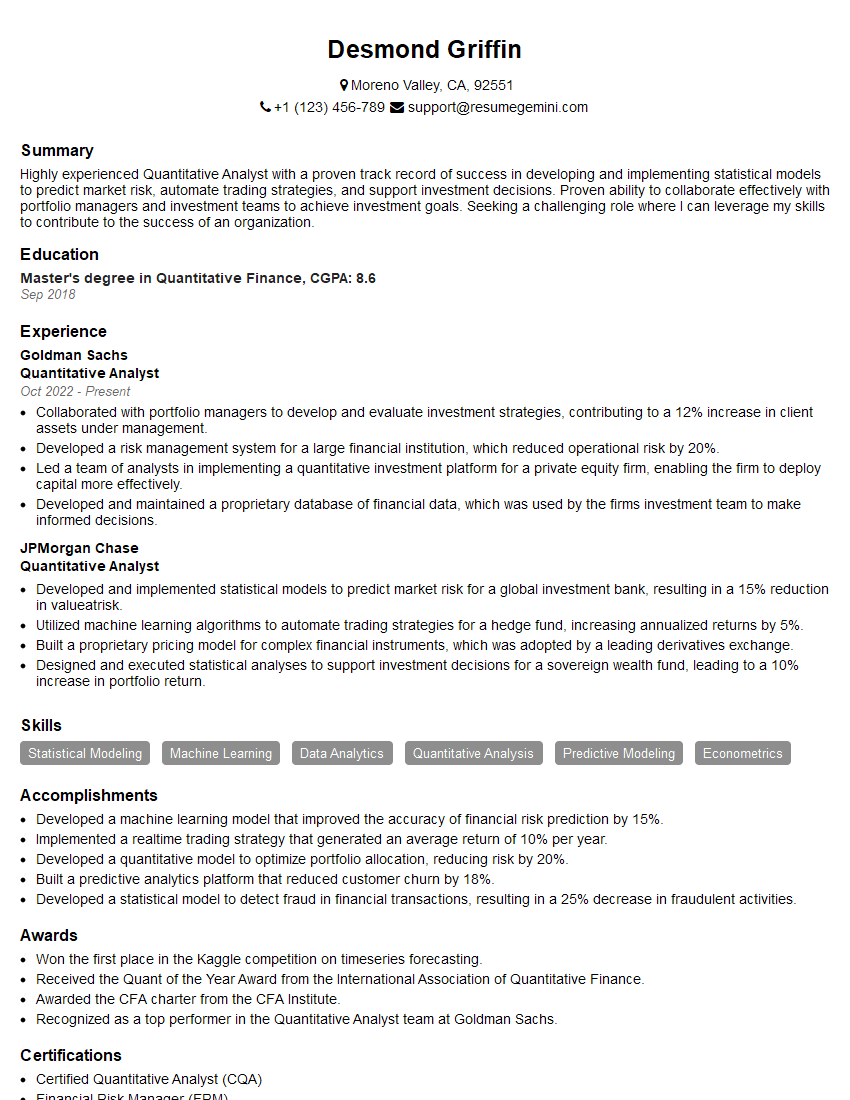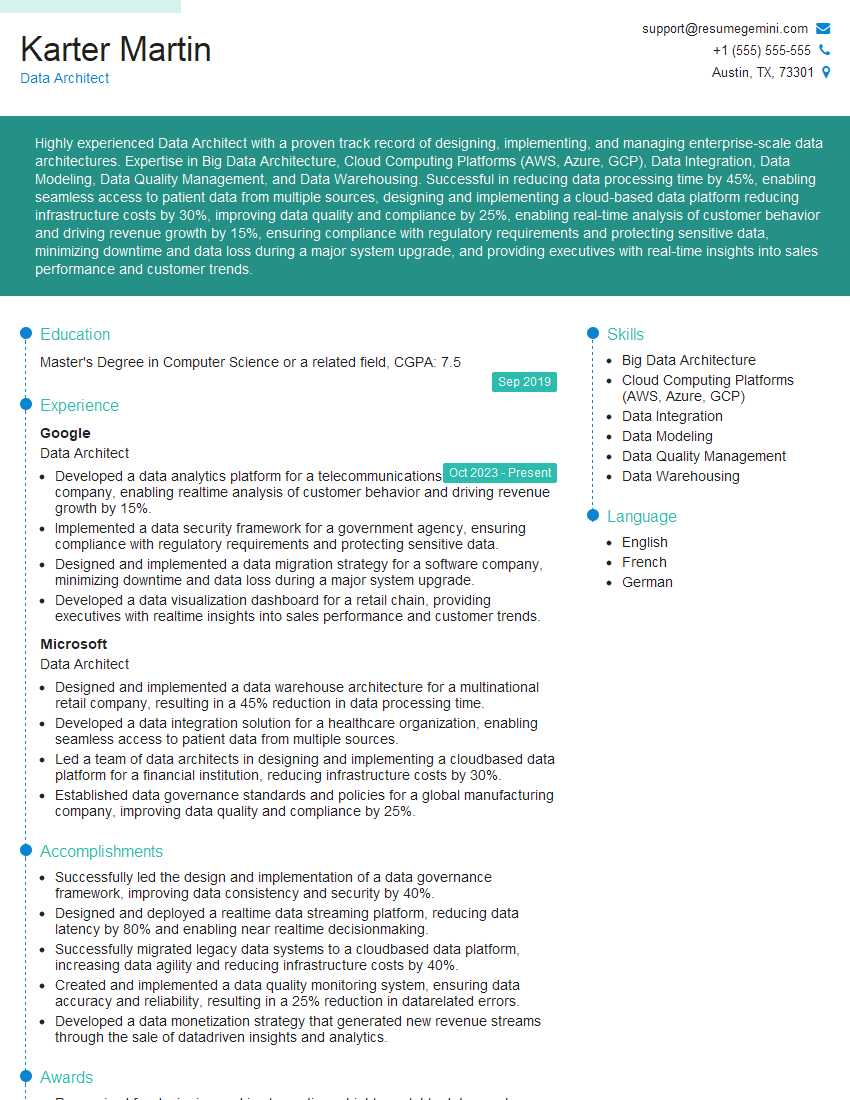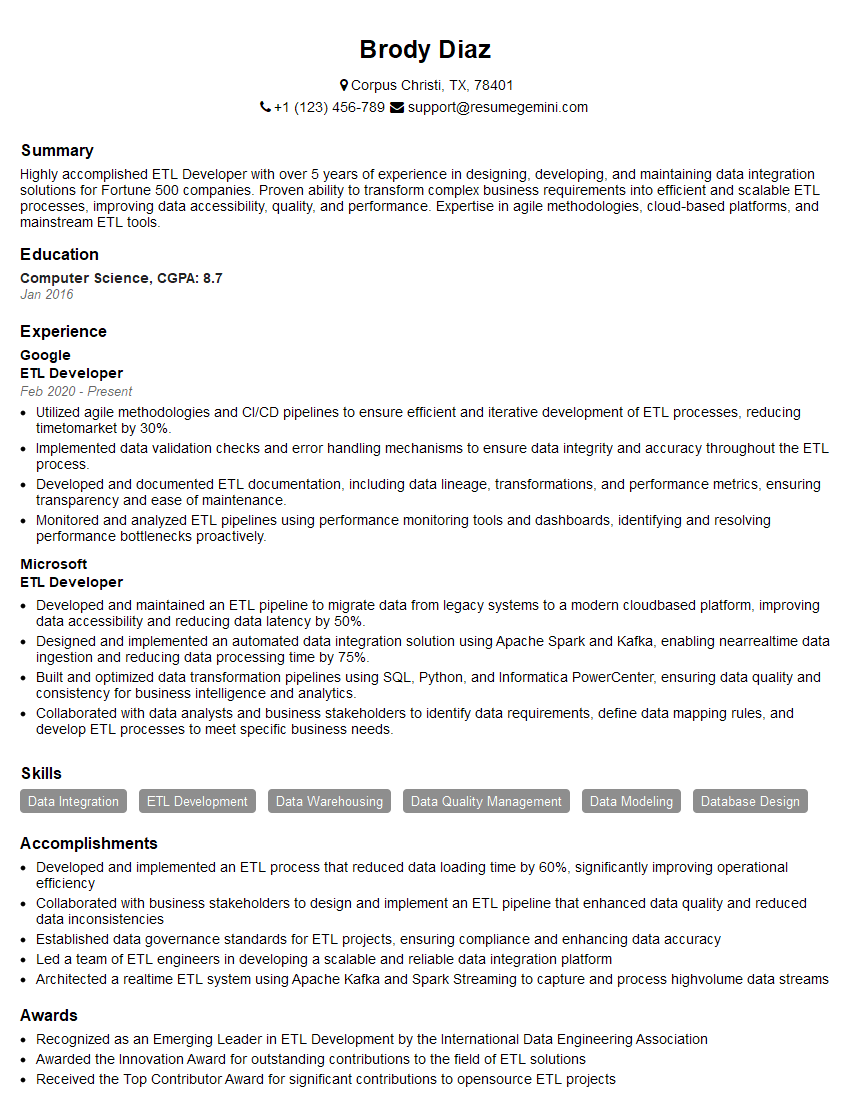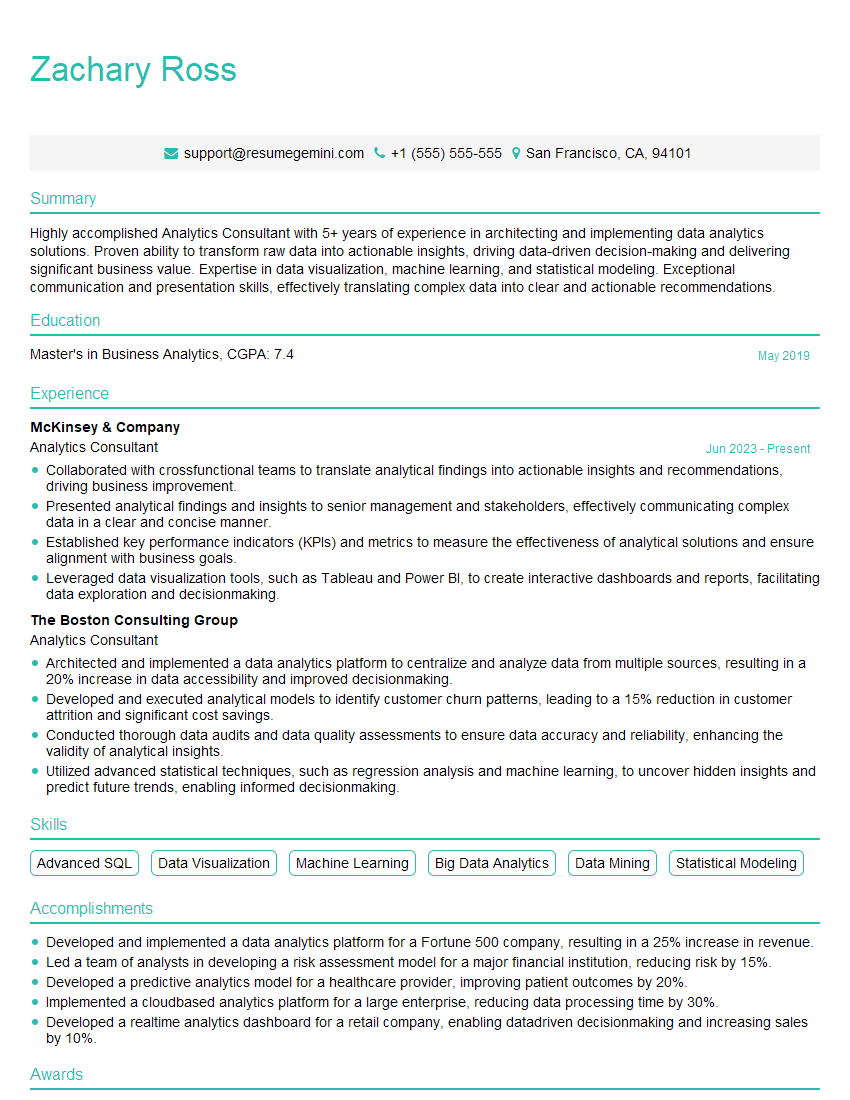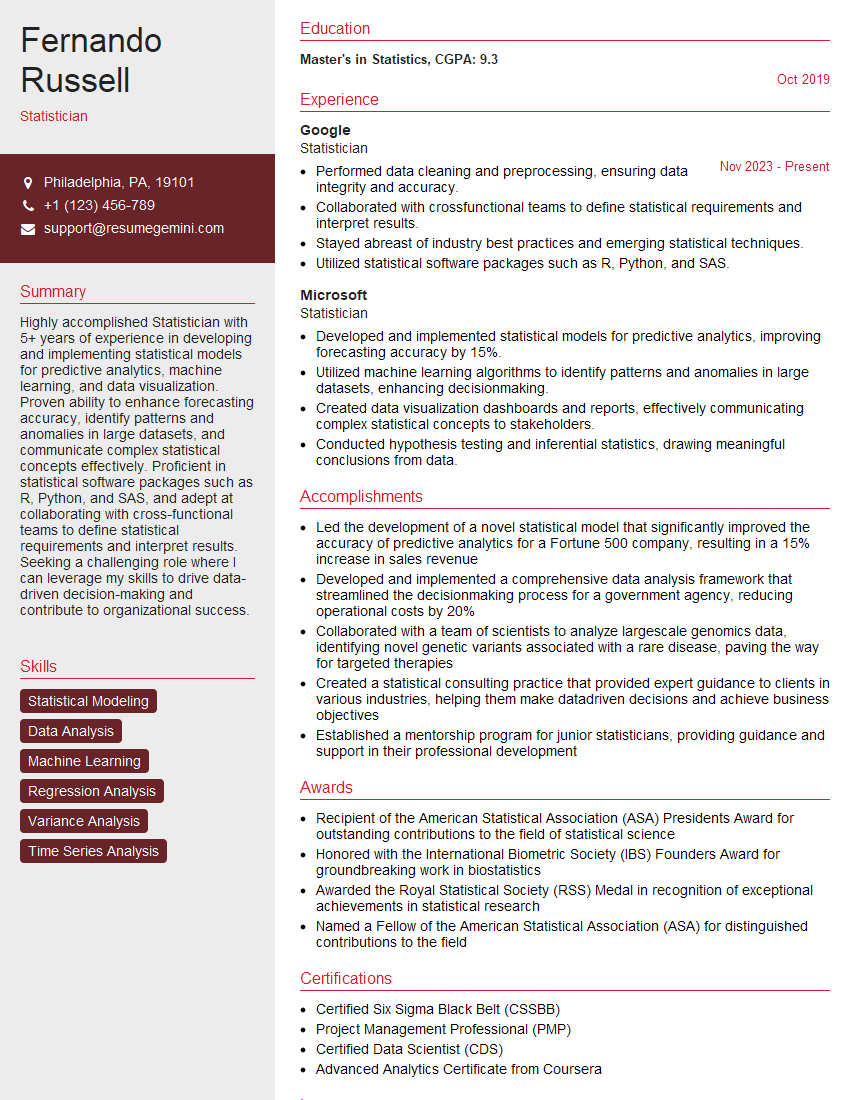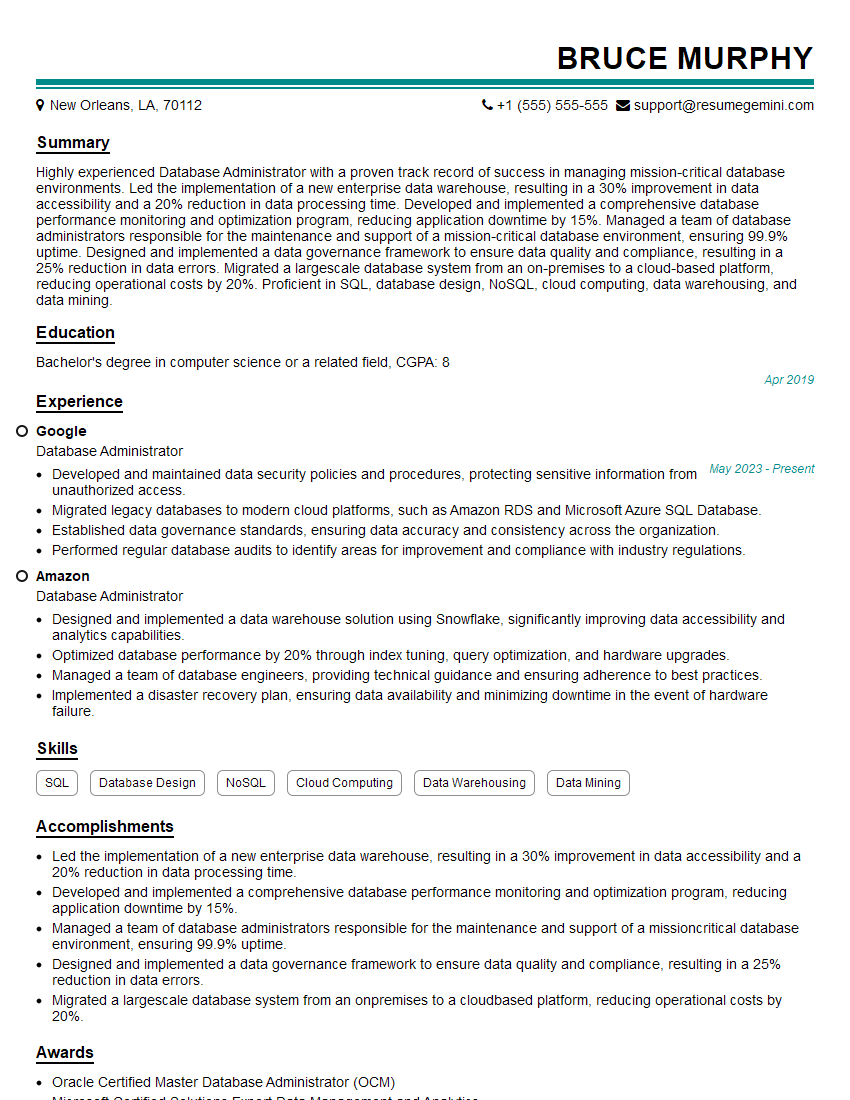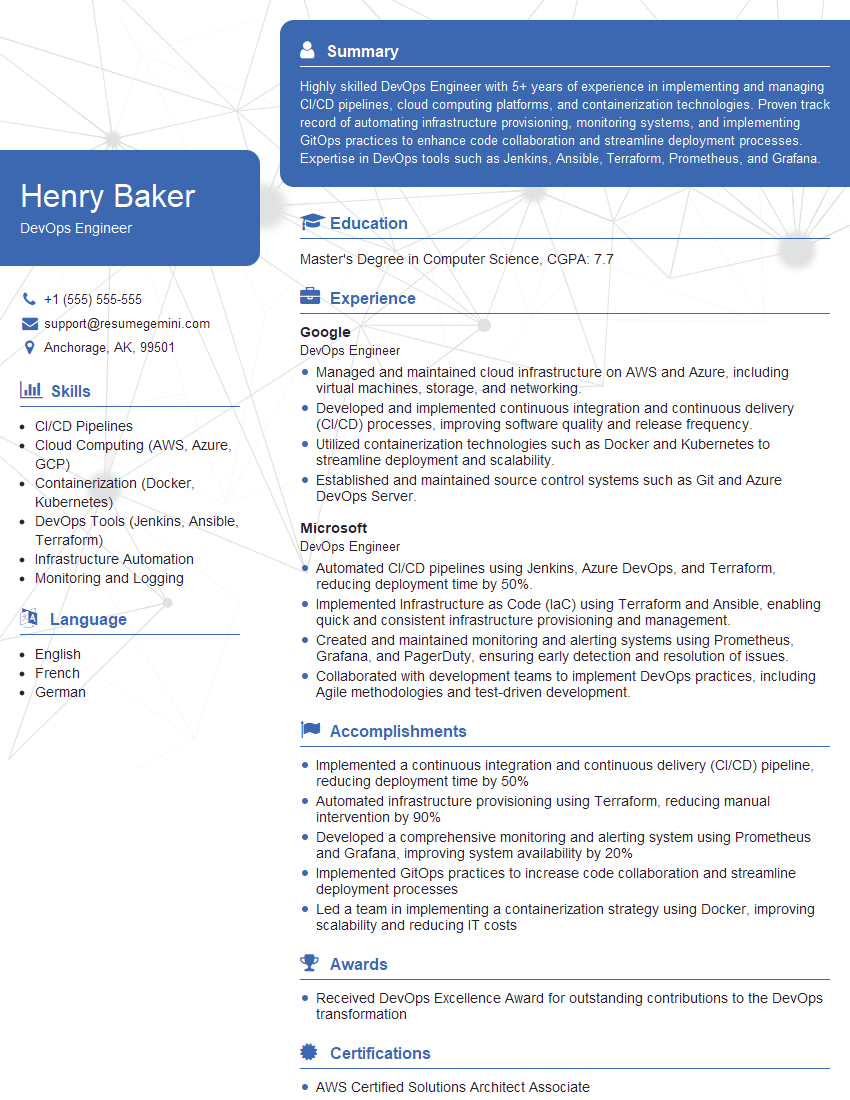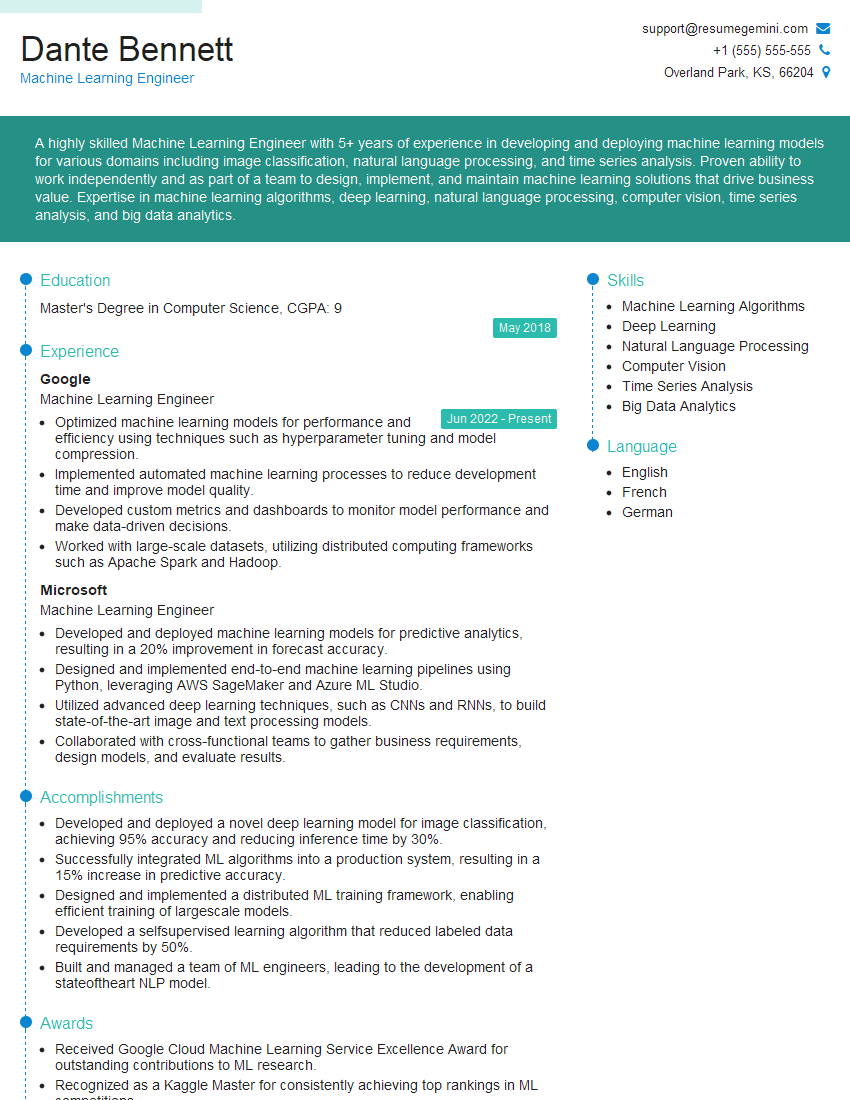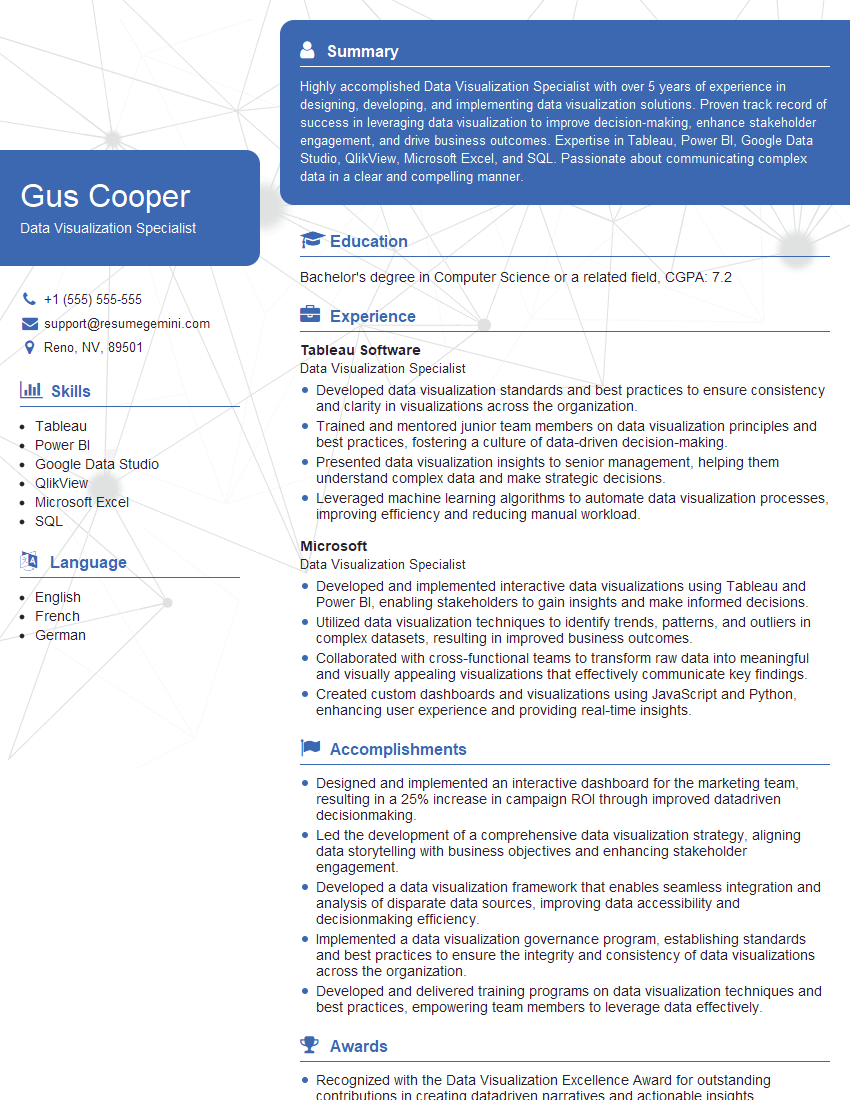The right preparation can turn an interview into an opportunity to showcase your expertise. This guide to R and Python interview questions is your ultimate resource, providing key insights and tips to help you ace your responses and stand out as a top candidate.
Questions Asked in R and Python Interview
Q 1. Explain the difference between `lapply`, `sapply`, and `mapply` in R.
lapply, sapply, and mapply are R’s workhorses for applying functions to lists or vectors. They differ primarily in how they handle the input and output.
lapply (list apply) applies a function to each element of a list and always returns a list of the same length, regardless of the function’s output. Think of it as a loop that neatly packages the results.
my_list <- list(1:3, 4:6, 7:9)
lapply(my_list, sum) # Returns a list with the sums of each sub-listsapply (simplify apply) is similar to lapply, but it attempts to simplify the output. If the function returns a single value for each element, sapply will return a vector; otherwise, it returns a list. It’s a convenient shortcut when you expect a simplified result.
sapply(my_list, sum) # Returns a numeric vector of sumsmapply (multiple apply) applies a function to multiple list or vector arguments in parallel. It’s perfect for situations where you need to apply a function element-wise across several inputs. Imagine you have two lists and want to add corresponding elements; mapply elegantly handles this.
list1 <- list(1, 2, 3)
list2 <- list(4, 5, 6)
mapply(sum, list1, list2) # Returns a vector of element-wise sumsIn essence: lapply always gives a list, sapply tries to simplify to a vector if possible, and mapply works across multiple inputs.
Q 2. What are the key differences between lists and dictionaries in Python?
Lists and dictionaries in Python are both used to store collections of items, but they differ fundamentally in how they organize and access data.
Lists are ordered, mutable (changeable) sequences of items. You access elements by their position (index), starting from 0. Imagine a numbered list; each item has a specific place.
my_list = [1, 'apple', 3.14]
print(my_list[0]) # Output: 1Dictionaries, on the other hand, are unordered collections of key-value pairs. Each item is accessed by its unique key, not its position. Think of a dictionary where you look up words (keys) to find their definitions (values). They are also mutable.
my_dict = {'name': 'Alice', 'age': 30, 'city': 'New York'}
print(my_dict['name']) # Output: AliceKey differences summarized:
- Ordering: Lists are ordered; dictionaries are unordered (in Python 3.7+, insertion order is preserved, but relying on this is generally discouraged).
- Access: Lists use numerical indices; dictionaries use keys.
- Mutability: Both are mutable.
- Use Cases: Lists are ideal for sequences; dictionaries for key-value lookups (like configuration settings or representing data structures).
Q 3. How do you handle missing data in R and Python?
Handling missing data (often represented as NA in R and NaN or None in Python) is crucial for data analysis. Ignoring it can lead to biased or incorrect results.
In R:
- Detection:
is.na()identifiesNAvalues. For example:is.na(my_data$column) - Removal:
na.omit()removes rows with anyNAvalues.complete.cases()helps identify complete rows. You can also use subsetting to remove NAs:my_data[!is.na(my_data$column), ] - Imputation: Replacing
NAwith estimated values. Common methods include using the mean, median, or mode of the column (mean(my_data$column, na.rm = TRUE), wherena.rm = TRUEignoresNAs during calculation), or using more sophisticated techniques like k-nearest neighbors.
In Python:
- Detection:
pandaslibrary offers functions likeisnull()andnotnull()for detecting missing values (df.isnull().sum()will give the number of missing values in each column).Nonecan be checked usingis None. - Removal:
dropna()removes rows or columns with missing values (df.dropna()). You can specifyaxis=0for rows andaxis=1for columns, orhow='any'orhow='all'for dropping rows with any or all missing values respectively. - Imputation:
fillna()replacesNaNorNonevalues with specified values, such as the mean, median, or a constant (e.g.,df['column'].fillna(df['column'].mean())ordf['column'].fillna(0)).
The choice of handling missing data depends on the dataset, the analysis, and the acceptable level of bias.
Q 4. Describe different methods for data cleaning in Python.
Data cleaning in Python, often done using the pandas library, is a crucial step to ensure data quality and reliability. It involves various techniques:
- Handling Missing Values: As discussed previously, this includes removing rows/columns with missing values or imputing them with appropriate values.
- Removing Duplicates:
df.duplicated()identifies duplicates, anddf.drop_duplicates()removes them. You can specify subset columns to only check for duplicates in selected columns. - Data Transformation: This includes converting data types (using
astype()), standardizing formats (dates, strings), and creating new features from existing ones. - Outlier Detection and Handling: Outliers can skew results. Techniques include using box plots, z-scores, or IQR (Interquartile Range) to identify them. Handling them might involve removing them, transforming them (log transformation), or using robust statistical methods that are less sensitive to outliers.
- Data Consistency Checks: This involves verifying the data matches expected patterns. This could mean checking if values fall within a specific range, ensuring data types are correct, or using regular expressions to validate string formats.
- Error Correction: This involves manually fixing errors or writing scripts to automate corrections.
A common workflow might involve iteratively applying these techniques, checking the data’s quality at each step.
Q 5. Explain the concept of data wrangling and its importance.
Data wrangling, also known as data munging or data preparation, is the process of transforming and mapping data from one format into another to make it more suitable for analysis. Think of it as cleaning, structuring, and preparing your ingredients before cooking a meal.
Importance:
- Improved Data Quality: Wrangling addresses inconsistencies, errors, and missing values, leading to more reliable analyses.
- Enhanced Analysis: Well-wrangled data is easier to analyze and visualize, allowing for more insightful findings.
- Model Performance: For machine learning, clean data significantly improves model accuracy and performance.
- Efficient Data Management: Organized data makes it simpler to manage, share, and reuse.
In essence, data wrangling sets the stage for accurate and meaningful insights; without it, even the most sophisticated analytical techniques are hampered.
Q 6. Compare and contrast different regression models in R.
R offers a rich collection of regression models. Here’s a comparison of some key types:
- Linear Regression: Models the relationship between a dependent variable and one or more independent variables using a linear equation. Assumes a linear relationship and normally distributed errors.
lm()function is used. - Polynomial Regression: Extends linear regression by including polynomial terms of independent variables. Useful when the relationship isn’t strictly linear. Can be achieved using
lm()with polynomial terms added manually. - Logistic Regression: Predicts the probability of a categorical dependent variable (usually binary: 0 or 1). Uses a sigmoid function to map the linear predictor to probabilities.
glm()function withfamily = binomialis used. - Generalized Linear Models (GLMs): A flexible framework encompassing linear, logistic, and Poisson regression. Allows for different link functions to model various distributions of the dependent variable.
glm()function is the workhorse here. - Regularized Regression (Ridge and Lasso): Addresses issues with multicollinearity and overfitting by adding penalty terms to the regression equation. Useful when you have many predictors. Packages like
glmnetprovide functions for these methods.
The choice of model depends on the nature of the dependent and independent variables and the research question.
Q 7. How would you perform linear regression in Python using scikit-learn?
Performing linear regression in Python using scikit-learn is straightforward:
import numpy as np
from sklearn.linear_model import LinearRegression
from sklearn.model_selection import train_test_split
# Sample data (replace with your own)
X = np.array([[1], [2], [3]])
y = np.array([2, 4, 5])
# Split data into training and testing sets
X_train, X_test, y_train, y_test = train_test_split(X, y, test_size=0.2, random_state=42) #test_size is the percentage of data to be used as test data
# Create and train the model
model = LinearRegression()
model.fit(X_train, y_train)
# Make predictions
y_pred = model.predict(X_test)
# Evaluate the model (example using R-squared)
print(model.score(X_test, y_test))This code snippet first imports necessary libraries, then creates a simple linear regression model using LinearRegression(). The fit() method trains the model using the training data. predict() makes predictions on the test data, and score() evaluates the model’s performance using R-squared (other metrics are also available).
Q 8. Explain the bias-variance tradeoff.
The bias-variance tradeoff is a fundamental concept in machine learning that describes the balance between a model’s ability to fit the training data (bias) and its ability to generalize to unseen data (variance). A model with high bias is too simple and underfits the data, failing to capture the underlying patterns. This leads to poor performance on both training and testing data. Conversely, a model with high variance is overly complex and overfits the data, capturing noise instead of the true signal. This results in excellent performance on training data but poor performance on unseen data.
Think of it like this: Imagine you’re trying to hit a target with an arrow. High bias is like aiming far off the target consistently – your model’s predictions are consistently wrong. High variance is like your arrows being scattered all over the place, sometimes close, sometimes far – your model’s predictions are inconsistent. The ideal model strikes a balance, minimizing both bias and variance, leading to accurate and reliable predictions on new data.
In practice, we often use techniques like regularization (L1 or L2) to reduce variance and prevent overfitting, or explore more complex models to reduce bias and improve the model’s ability to capture underlying patterns. Finding the sweet spot between bias and variance is crucial for building effective machine learning models.
Q 9. How do you handle imbalanced datasets in machine learning?
Imbalanced datasets, where one class significantly outnumbers others, pose a significant challenge in machine learning. A model trained on such data might become biased towards the majority class, leading to poor performance on the minority class, which is often the class of interest. There are several strategies to address this:
- Resampling Techniques: This involves modifying the dataset to balance class proportions. Oversampling increases the number of instances in the minority class (e.g., SMOTE – Synthetic Minority Over-sampling Technique), while undersampling reduces the number of instances in the majority class. It’s important to choose the appropriate resampling method depending on the dataset size and characteristics.
- Cost-Sensitive Learning: This approach assigns different misclassification costs to different classes. For example, misclassifying a minority class instance might be assigned a higher cost than misclassifying a majority class instance. This encourages the model to pay more attention to the minority class.
- Ensemble Methods: Techniques like bagging and boosting can be adapted to handle imbalanced data. Boosting algorithms, in particular, can focus on the more difficult-to-classify minority class examples.
- Anomaly Detection Techniques: If the minority class represents anomalies or outliers, anomaly detection methods (e.g., Isolation Forest, One-Class SVM) might be more appropriate than traditional classification.
Choosing the best technique depends heavily on the specific dataset and problem. Often, a combination of approaches is employed for optimal results. For example, one could use SMOTE for oversampling and then apply a cost-sensitive learning algorithm.
Q 10. What are the different types of machine learning algorithms?
Machine learning algorithms can be broadly classified into several categories:
- Supervised Learning: Algorithms that learn from labeled data (input data with known outputs). Examples include linear regression, logistic regression, support vector machines (SVMs), decision trees, and random forests.
- Unsupervised Learning: Algorithms that learn from unlabeled data (input data without known outputs). Examples include k-means clustering, hierarchical clustering, principal component analysis (PCA), and association rule mining.
- Reinforcement Learning: Algorithms that learn by interacting with an environment and receiving rewards or penalties. Examples include Q-learning and deep Q-networks (DQNs).
Within these categories, there are many variations and sub-categories. For example, within supervised learning, we have regression algorithms for predicting continuous values and classification algorithms for predicting categorical values. The choice of algorithm depends on the specific problem and dataset.
Q 11. Explain the difference between supervised and unsupervised learning.
The core difference between supervised and unsupervised learning lies in the nature of the data used for training:
- Supervised Learning: The algorithm learns from a labeled dataset, where each data point is associated with a known output or target variable. The goal is to learn a mapping from inputs to outputs, allowing the model to predict outputs for new, unseen inputs. Think of it like a teacher supervising a student’s learning process, providing correct answers.
- Unsupervised Learning: The algorithm learns from an unlabeled dataset, where no target variable is provided. The goal is to discover underlying patterns, structures, or relationships within the data without explicit guidance. This is like giving a student a puzzle without instructions; they need to figure out the solution on their own.
Examples: A spam filter (supervised learning) learns from labeled emails (spam/not spam) to classify new emails. Customer segmentation (unsupervised learning) groups customers based on their purchasing behavior without pre-defined groups.
Q 12. What are some common performance metrics used in machine learning?
The choice of performance metrics depends heavily on the type of machine learning problem (classification, regression, clustering, etc.). Some common metrics include:
- Accuracy: The ratio of correctly classified instances to the total number of instances (for classification).
- Precision: The ratio of correctly predicted positive instances to the total predicted positive instances (for classification).
- Recall (Sensitivity): The ratio of correctly predicted positive instances to the total actual positive instances (for classification).
- F1-Score: The harmonic mean of precision and recall, providing a balanced measure (for classification).
- AUC (Area Under the ROC Curve): Measures the ability of a classifier to distinguish between classes (for classification).
- Mean Squared Error (MSE): Measures the average squared difference between predicted and actual values (for regression).
- R-squared: Represents the proportion of variance in the dependent variable explained by the model (for regression).
- Silhouette Score: Measures how similar a data point is to its own cluster compared to other clusters (for clustering).
Often, multiple metrics are used to provide a comprehensive evaluation of model performance.
Q 13. How do you evaluate the performance of a classification model?
Evaluating the performance of a classification model involves several steps:
- Choosing Appropriate Metrics: Select metrics relevant to the problem, such as accuracy, precision, recall, F1-score, AUC, etc., considering the class imbalance if present.
- Splitting Data: Divide the dataset into training, validation, and testing sets. The training set is used to train the model, the validation set for hyperparameter tuning, and the testing set for final evaluation on unseen data.
- Cross-Validation: Employ techniques like k-fold cross-validation to obtain a more robust performance estimate by training and evaluating the model on multiple folds of the data.
- Confusion Matrix: Analyze the confusion matrix to understand the model’s performance across different classes, identifying potential biases or weaknesses.
- ROC Curve and AUC: Visualize the ROC curve and calculate the AUC to assess the model’s ability to discriminate between classes, especially useful when dealing with imbalanced datasets.
- Compare with Baselines: Compare the model’s performance against simple baselines (e.g., always predicting the majority class) to establish a meaningful benchmark.
By combining these steps, we obtain a thorough understanding of the model’s strengths and weaknesses, enabling informed decisions about model selection and deployment.
Q 14. Explain the concept of cross-validation.
Cross-validation is a powerful resampling technique used to evaluate the performance of a machine learning model and to reduce the risk of overfitting. It works by splitting the dataset into multiple subsets (folds), training the model on some folds, and evaluating it on the remaining held-out fold. This process is repeated multiple times, with different folds used for training and testing in each iteration. The final performance estimate is the average performance across all iterations.
The most common type is k-fold cross-validation, where the dataset is divided into ‘k’ folds. For example, in 5-fold cross-validation, the dataset is split into 5 folds. The model is trained on 4 folds and tested on the remaining fold. This process is repeated 5 times, with each fold serving as the test set once. The average performance across the 5 iterations provides a more robust estimate of the model’s generalization performance compared to a single train-test split.
Other forms include leave-one-out cross-validation (LOOCV), where each data point is used as a test set, and stratified k-fold cross-validation, which ensures that the class proportions are similar in each fold, essential for imbalanced datasets.
Cross-validation is crucial for model selection, hyperparameter tuning, and obtaining a reliable estimate of a model’s performance on unseen data, leading to more robust and generalizable machine learning models.
Q 15. How would you implement k-means clustering in R or Python?
K-means clustering is an unsupervised machine learning algorithm used to partition data points into k clusters, where each data point belongs to the cluster with the nearest mean (centroid). Think of it like sorting marbles of different colors into separate bowls based on their similarity in color.
In R, we can use the kmeans() function from the stats package (which is loaded by default). Here’s an example:
# Sample data
data <- data.frame(x = rnorm(100), y = rnorm(100))
# Perform k-means clustering with 3 clusters
result <- kmeans(data, centers = 3)
# Plot the results
plot(data, col = result$cluster, main = "K-means Clustering")
points(result$centers, col = 1:3, pch = 8, cex = 2)
In Python, we typically use the KMeans class from the sklearn.cluster library. The process is similar:
import matplotlib.pyplot as plt
from sklearn.cluster import KMeans
import numpy as np
# Sample data
data = np.random.rand(100, 2)
# Perform k-means clustering with 3 clusters
kmeans = KMeans(n_clusters=3, random_state=0)
kmeans.fit(data)
# Plot the results
plt.scatter(data[:, 0], data[:, 1], c=kmeans.labels_)
plt.scatter(kmeans.cluster_centers_[:, 0], kmeans.cluster_centers_[:, 1], marker='*', s=200, c='red')
plt.show()
Choosing the optimal number of clusters (k) is crucial and often involves techniques like the elbow method or silhouette analysis.
Career Expert Tips:
- Ace those interviews! Prepare effectively by reviewing the Top 50 Most Common Interview Questions on ResumeGemini.
- Navigate your job search with confidence! Explore a wide range of Career Tips on ResumeGemini. Learn about common challenges and recommendations to overcome them.
- Craft the perfect resume! Master the Art of Resume Writing with ResumeGemini’s guide. Showcase your unique qualifications and achievements effectively.
- Don’t miss out on holiday savings! Build your dream resume with ResumeGemini’s ATS optimized templates.
Q 16. What are some common libraries used for data visualization in Python?
Python offers a rich ecosystem of libraries for data visualization. Some of the most popular include:
- Matplotlib: A fundamental library providing a wide range of plotting functionalities, from basic line plots to complex visualizations. It’s the foundation upon which many other libraries are built.
- Seaborn: Built on top of Matplotlib, Seaborn offers a higher-level interface with statistically informative plots and aesthetically pleasing defaults. It simplifies creating complex visualizations like heatmaps and violin plots.
- Plotly: Enables creating interactive plots that can be easily embedded in websites or dashboards. This is particularly useful for exploring large datasets and presenting findings dynamically.
- Bokeh: Similar to Plotly, Bokeh focuses on interactive visualizations, particularly well-suited for large datasets and streaming data applications.
- Altair: A declarative visualization library that makes it easy to create complex charts with minimal code, ideal for exploring data and creating publication-quality figures.
The choice of library often depends on the specific visualization needs and the complexity of the data.
Q 17. Explain the use of ggplot2 in R for data visualization.
ggplot2 in R is a powerful and versatile data visualization package based on the grammar of graphics. This grammar provides a structured way to build complex plots by combining different layers, making it highly flexible and customizable. Think of it as building with LEGOs – you combine different elements to create a desired image.
Key components include:
- Data: The dataset you’re visualizing.
- Aesthetics (aes): Mapping variables to visual properties like x and y coordinates, color, shape, and size.
- Geometries (geom): The type of plot (e.g., points, lines, bars).
- Facets: Creating subplots based on different categories.
- Scales: Controlling the appearance of axes (e.g., changing labels, limits).
- Themes: Adjusting overall plot appearance (e.g., background, text).
A simple example:
library(ggplot2)
data <- data.frame(x = 1:10, y = rnorm(10))
ggplot(data, aes(x = x, y = y)) + geom_point() + labs(title = "Simple Scatter Plot")
ggplot2‘s strength lies in its ability to create sophisticated and informative visualizations with relatively concise code, making it a favorite among data scientists and statisticians.
Q 18. How do you create a heatmap in R?
Creating a heatmap in R is straightforward using functions from packages like ggplot2 or heatmap() from the stats package. The heatmap() function offers a quick way to generate a heatmap, while ggplot2 provides greater control over aesthetics and customization.
Using ggplot2:
library(ggplot2)
# Sample data (replace with your data)
data <- matrix(rnorm(100), nrow = 10)
# Convert to data frame for ggplot2
df <- as.data.frame(data)
colnames(df) <- paste0("V", 1:ncol(df))
# Melt the data for ggplot2
library(reshape2)
df_melt <- melt(df)
colnames(df_melt) <- c("X", "Y", "value")
# Create the heatmap
ggplot(df_melt, aes(x = X, y = Y, fill = value)) +
geom_tile() +
scale_fill_gradient2() +
labs(title = "Heatmap")
Using the base heatmap() function:
heatmap(data)
Remember to adapt these examples to your specific data and desired aesthetics. For instance, you can adjust the color palettes and add labels for a more informative and visually appealing heatmap.
Q 19. How do you handle outliers in your data?
Outliers are data points significantly different from other observations. Handling them depends on the context and the nature of the outliers. Simply removing them isn’t always the best approach. Here’s a multi-pronged strategy:
- Identification: Use methods like box plots, scatter plots, Z-scores, or the Interquartile Range (IQR) to identify potential outliers. Z-scores measure how many standard deviations a data point is from the mean. The IQR method identifies outliers based on the data’s spread.
- Investigation: Before removing outliers, understand why they exist. They might indicate errors in data collection, genuine extreme values, or a different underlying population. Investigate data sources and domain knowledge.
- Transformation: Transform your data using techniques like logarithmic transformation or Box-Cox transformation to reduce the influence of outliers. This compresses the scale and reduces the impact of extreme values.
- Robust Methods: Use statistical methods less sensitive to outliers, like median instead of mean, or robust regression techniques.
- Winsorizing/Trimming: Winsorizing replaces extreme values with less extreme ones (e.g., the highest value is replaced with a value at a certain percentile). Trimming involves removing a certain percentage of extreme values from both ends of the data distribution.
- Removal (Use Cautiously): Only remove outliers if you have a strong justification, such as confirmed errors in data entry. Document your decision thoroughly.
The choice of method depends on the specific data and the goal of your analysis. It’s crucial to document your outlier handling strategy for transparency and reproducibility.
Q 20. Describe your experience with data manipulation using Pandas in Python.
Pandas in Python is my go-to library for data manipulation. Its DataFrame structure provides a powerful and flexible way to work with tabular data. I’ve extensively used it for tasks like:
- Data Cleaning: Handling missing values (using
fillna(),dropna()), removing duplicates (drop_duplicates()), and correcting data inconsistencies. - Data Transformation: Applying functions to columns (
apply()), creating new columns based on existing ones, and reshaping data (pivot_table(),melt(),stack(),unstack()). - Data Filtering: Selecting specific rows or columns based on conditions (Boolean indexing), using
locandilocfor label-based and integer-based indexing, respectively. - Data Aggregation: Grouping data (
groupby()) and calculating aggregate statistics (e.g., mean, sum, count) for each group. - Data Joining/Merging: Combining datasets using different join types (
merge(),concat()) based on common keys.
For instance, I once used Pandas to clean a large customer dataset, handling missing addresses by using geospatial data to infer addresses and standardizing date formats to improve data quality. This significantly improved the accuracy of my subsequent analysis.
Q 21. Explain the concept of feature engineering.
Feature engineering is the process of using domain knowledge to create new features from existing ones that improve the performance of a machine learning model. It’s like preparing ingredients for a recipe – the better the ingredients, the better the dish. Think of it as transforming raw data into something more informative and useful for your model.
Examples include:
- Creating Interaction Terms: Multiplying two or more existing features to capture their interaction effects. For example, combining age and income to create a ‘wealth’ feature.
- Polynomial Features: Adding polynomial terms of existing features to capture non-linear relationships. This is useful when relationships aren’t linear.
- One-Hot Encoding: Converting categorical features into numerical representations by creating dummy variables. This converts qualitative data into data the model can understand.
- Date/Time Features: Extracting features like day of the week, month, or hour from a date/time variable. This can reveal cyclical patterns.
- Feature Scaling/Normalization: Scaling features to a similar range (e.g., using standardization or min-max scaling) to prevent features with larger values from dominating the model.
Effective feature engineering can significantly enhance a model’s predictive power, often more so than using a more complex model on the original features. It requires a good understanding of the data and the problem you are trying to solve.
Q 22. How do you optimize the performance of your code?
Optimizing code performance is crucial for efficiency, especially when dealing with large datasets or complex computations. My approach involves a multi-pronged strategy focusing on algorithmic efficiency, data structure selection, and code profiling.
Algorithmic Optimization: Choosing the right algorithm is paramount. For instance, a poorly chosen sorting algorithm can significantly impact performance. Switching from a naive O(n²) algorithm (like bubble sort) to an efficient O(n log n) algorithm (like merge sort) drastically reduces runtime, particularly for larger datasets.
Data Structure Selection: The choice of data structure heavily influences performance. In Python, using a list for frequent appends might be slower than using a deque from the
collectionsmodule, which is optimized for append and pop operations from both ends. Similarly, in R, choosing between a vector, list, or data frame depends on the intended operations and data characteristics. Hash tables (dictionaries in Python, hash tables in R) provide O(1) average-time complexity for lookups, making them ideal for searching.Code Profiling: Profiling tools are indispensable for identifying performance bottlenecks. In Python, I use the
cProfilemodule to pinpoint slow functions. R offers similar tools likeprofvisfor visualizing execution time. Profiling allows me to focus optimization efforts on the most impactful areas of the code, avoiding premature optimization of less critical sections.Vectorization: In both R and Python (especially with NumPy), vectorized operations are much faster than iterative loops. Instead of iterating element by element, vectorized operations perform calculations on entire arrays at once. This takes advantage of optimized underlying libraries and significantly improves performance.
Memory Management: For large datasets, efficient memory management is crucial. Techniques like using generators to process data in chunks rather than loading everything at once can prevent memory exhaustion. In R, techniques like using data.table for efficient data manipulation can also be helpful.
For example, imagine processing a large CSV file. Instead of loading the entire file into memory, I would use iterators or generators to read and process the file line by line or in chunks. This allows me to handle files far larger than my available RAM.
Q 23. What are some common data structures used in R and Python?
Both R and Python offer a rich array of data structures suited for various tasks. The choice depends on the specific needs of the application.
Python:
list: Ordered, mutable sequence of items. Analogous to vectors in R.tuple: Ordered, immutable sequence. Useful for representing fixed collections.dictionary(dict): Unordered collection of key-value pairs. Highly efficient for lookups.set: Unordered collection of unique items. Useful for membership testing.NumPy arrays: Highly optimized for numerical computations. Enable vectorized operations for speed.Pandas DataFrames: Two-dimensional, labeled data structures. Provide powerful tools for data manipulation and analysis, highly analogous to R’s data frames.
R:
vector: Ordered sequence of elements of the same data type.list: Ordered sequence of elements that can be of different data types.matrix: Two-dimensional array of elements of the same data type.array: Multi-dimensional array.data frame: Two-dimensional tabular data structure where columns can have different data types.data.table: A highly optimized package for fast data manipulation, especially with large datasets.
Understanding these data structures is fundamental to writing efficient and readable code. For example, using a dictionary in Python for quick lookups is far more efficient than iterating through a list when searching for a specific element.
Q 24. Describe your experience working with large datasets.
I have extensive experience working with large datasets, often exceeding available RAM. My approach focuses on techniques to manage data efficiently and leverage distributed computing where needed.
Data Chunking: I frequently process large files in chunks using iterators or generators, processing only a portion of the data at a time to prevent memory overflow. In R, packages like
data.tableoften allow for this efficient reading and processing of massive datasets.Database Systems: For datasets too large to comfortably fit in memory, I rely heavily on database systems (SQL and NoSQL). SQL databases are ideal for structured data, providing efficient querying and data manipulation. NoSQL databases (like MongoDB or Cassandra) are preferred for unstructured or semi-structured data and offer scalability.
Distributed Computing: For exceptionally large datasets or computationally intensive tasks, I utilize parallel processing frameworks like Spark (with Python or R interfaces) or Dask in Python. These frameworks enable distributing the workload across multiple machines or cores, significantly reducing processing time.
Data Sampling: When dealing with extremely large datasets, it may be feasible to work with a representative sample of the data to perform exploratory analysis or model training. This reduces the processing demands while maintaining the integrity of the results, as long as the sampling is done properly.
For instance, in a recent project involving analyzing terabytes of sensor data, I used Spark to process the data in parallel across a cluster of machines, enabling efficient analysis and model training that would have been impossible on a single machine.
Q 25. Explain your understanding of different database systems (SQL, NoSQL).
SQL and NoSQL databases represent distinct approaches to data storage and retrieval. The best choice depends on the nature of the data and the application’s requirements.
SQL (Relational Databases): SQL databases, such as MySQL, PostgreSQL, and SQL Server, organize data into structured tables with well-defined relationships between them. They excel at managing structured data with well-defined schemas. SQL’s strength lies in its ACID properties (Atomicity, Consistency, Isolation, Durability), ensuring data integrity. They are excellent for complex queries and transactions requiring data consistency.
NoSQL (Non-Relational Databases): NoSQL databases, such as MongoDB (document database), Cassandra (wide-column store), and Redis (in-memory data store), offer flexible schemas and are better suited for unstructured or semi-structured data. They prioritize scalability and availability over strict data consistency. NoSQL databases are ideal for high-volume, high-velocity data, such as social media feeds or sensor data.
The choice between SQL and NoSQL isn’t always an either/or proposition. Many applications utilize a combination of both (polyglot persistence) to leverage the strengths of each.
Q 26. How do you debug your code effectively?
Effective debugging is a critical skill. My approach involves a systematic process that combines automated tools and careful analysis.
Print Statements/Logging: For simple debugging, strategically placed
print()statements (Python) orprint()/cat()(R) are incredibly helpful. This allows tracking variable values and program flow. For larger projects, logging frameworks (like Python’sloggingmodule) provide more structured and persistent logging.Debuggers: Interactive debuggers are invaluable for stepping through code line by line, inspecting variables, and setting breakpoints. Python’s
pdb(Python Debugger) and RStudio’s integrated debugger are excellent examples. These tools enable me to identify the precise location and cause of errors effectively.Error Messages: Carefully reading and understanding error messages is crucial. The error message often provides clues about the type and location of the error. I pay close attention to stack traces, which provide a sequence of function calls leading up to the error.
Unit Testing: Writing unit tests helps detect bugs early in the development process. Frameworks like Python’s
unittestor R’stestthatmake writing and running tests straightforward.Code Reviews: Having another developer review my code helps catch errors I might have overlooked. A fresh perspective can often identify subtle bugs or areas for improvement.
Example: If I encounter a TypeError in Python, I would immediately check the data types of the variables involved to see if there’s a type mismatch causing the error. The debugger would help me pinpoint the exact line causing the problem.
Q 27. How familiar are you with version control systems like Git?
I’m highly proficient in using Git for version control. I regularly utilize Git for managing code, collaborating on projects, and tracking changes. My skills encompass:
Branching and Merging: I effectively use branches for feature development and bug fixes, merging changes back into the main branch using strategies like ‘rebase’ or ‘merge’ depending on the context.
Committing and Pushing: I consistently write clear and concise commit messages to describe the changes made. I push my changes to remote repositories regularly.
Pull Requests/Merge Requests: I actively participate in code reviews using pull requests or merge requests. This collaborative approach improves code quality and prevents errors.
Resolving Conflicts: I effectively resolve merge conflicts when multiple developers modify the same code sections.
Using Git for Collaboration: I understand how to use Git to work effectively in teams, managing branches and merging changes seamlessly.
I frequently use Git’s branching capabilities to experiment with new features without affecting the main codebase, ensuring a clean and organized development process.
Q 28. Describe a project where you used R or Python to solve a real-world problem.
In a recent project, I used Python and Pandas to analyze customer churn for a telecommunications company. The company had a massive dataset of customer information, including usage patterns, demographics, and billing history. My goal was to build a predictive model to identify customers at high risk of churning.
Data Cleaning and Preprocessing: I first used Pandas to clean the data, handling missing values and outliers. This involved techniques like imputation and data transformation.
Feature Engineering: I created new features from the existing data, such as average monthly usage, call duration ratios, and customer tenure to enhance the predictive power of the model.
Model Building: I then employed various machine learning algorithms, including logistic regression, support vector machines (SVM), and random forests, using Scikit-learn. I used techniques like cross-validation to tune hyperparameters and avoid overfitting.
Model Evaluation and Selection: I evaluated the models based on metrics like precision, recall, F1-score, and AUC, choosing the model that provided the best balance between precision and recall.
Deployment: Finally, I created a simple web application (using Flask) to allow the company to input new customer data and obtain a churn prediction.
This project highlighted the power of Python’s data analysis and machine learning libraries in solving a real-world problem. The project’s success demonstrated the importance of proper data preprocessing, feature engineering, model selection, and finally model deployment.
Key Topics to Learn for R and Python Interviews
- R Fundamentals: Data structures (vectors, lists, data frames), data manipulation with dplyr, data visualization with ggplot2, basic statistical concepts (hypothesis testing, regression).
- R Application: Working with real-world datasets (e.g., analyzing customer behavior, conducting A/B testing), building predictive models using linear regression or other algorithms, creating compelling data visualizations for presentations.
- R Advanced Topics: Data wrangling with tidyr, working with different file formats (CSV, JSON, etc.), optimizing code for efficiency, understanding and applying statistical modeling techniques beyond the basics.
- Python Fundamentals: Data structures (lists, dictionaries, sets, tuples), working with NumPy arrays, data manipulation with Pandas, object-oriented programming concepts.
- Python Application: Building data pipelines using Pandas, web scraping with libraries like Beautiful Soup, data visualization with Matplotlib and Seaborn, working with APIs.
- Python Advanced Topics: Working with large datasets using Dask or Vaex, mastering different machine learning algorithms (regression, classification, clustering), implementing model deployment strategies, working with databases (SQL).
- Cross-Language Concepts: Understanding the strengths and weaknesses of each language, choosing the appropriate tool for a given task, effectively communicating insights derived from data analysis in either language.
Next Steps
Mastering R and Python opens doors to exciting and rewarding careers in data science, analytics, and related fields. These skills are highly sought after, leading to increased job opportunities and higher earning potential. To maximize your chances of landing your dream role, it’s crucial to present yourself effectively. Building an ATS-friendly resume is key to getting your application noticed. ResumeGemini is a trusted resource that can help you craft a professional and impactful resume tailored to highlight your R and Python expertise. Examples of resumes specifically designed for R and Python roles are available to guide you through the process.
Explore more articles
Users Rating of Our Blogs
Share Your Experience
We value your feedback! Please rate our content and share your thoughts (optional).
What Readers Say About Our Blog
Hey interviewgemini.com, just wanted to follow up on my last email.
We just launched Call the Monster, an parenting app that lets you summon friendly ‘monsters’ kids actually listen to.
We’re also running a giveaway for everyone who downloads the app. Since it’s brand new, there aren’t many users yet, which means you’ve got a much better chance of winning some great prizes.
You can check it out here: https://bit.ly/callamonsterapp
Or follow us on Instagram: https://www.instagram.com/callamonsterapp
Thanks,
Ryan
CEO – Call the Monster App
Hey interviewgemini.com, I saw your website and love your approach.
I just want this to look like spam email, but want to share something important to you. We just launched Call the Monster, a parenting app that lets you summon friendly ‘monsters’ kids actually listen to.
Parents are loving it for calming chaos before bedtime. Thought you might want to try it: https://bit.ly/callamonsterapp or just follow our fun monster lore on Instagram: https://www.instagram.com/callamonsterapp
Thanks,
Ryan
CEO – Call A Monster APP
To the interviewgemini.com Owner.
Dear interviewgemini.com Webmaster!
Hi interviewgemini.com Webmaster!
Dear interviewgemini.com Webmaster!
excellent
Hello,
We found issues with your domain’s email setup that may be sending your messages to spam or blocking them completely. InboxShield Mini shows you how to fix it in minutes — no tech skills required.
Scan your domain now for details: https://inboxshield-mini.com/
— Adam @ InboxShield Mini
Reply STOP to unsubscribe
Hi, are you owner of interviewgemini.com? What if I told you I could help you find extra time in your schedule, reconnect with leads you didn’t even realize you missed, and bring in more “I want to work with you” conversations, without increasing your ad spend or hiring a full-time employee?
All with a flexible, budget-friendly service that could easily pay for itself. Sounds good?
Would it be nice to jump on a quick 10-minute call so I can show you exactly how we make this work?
Best,
Hapei
Marketing Director
Hey, I know you’re the owner of interviewgemini.com. I’ll be quick.
Fundraising for your business is tough and time-consuming. We make it easier by guaranteeing two private investor meetings each month, for six months. No demos, no pitch events – just direct introductions to active investors matched to your startup.
If youR17;re raising, this could help you build real momentum. Want me to send more info?
Hi, I represent an SEO company that specialises in getting you AI citations and higher rankings on Google. I’d like to offer you a 100% free SEO audit for your website. Would you be interested?
Hi, I represent an SEO company that specialises in getting you AI citations and higher rankings on Google. I’d like to offer you a 100% free SEO audit for your website. Would you be interested?
good

